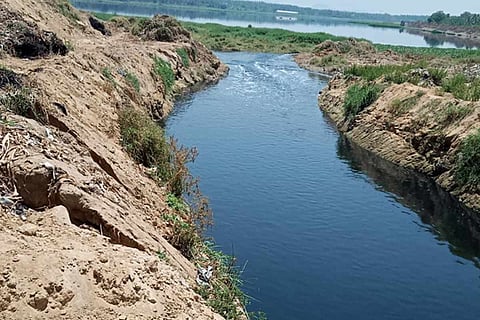

A picture of a visibly pristine Vrishabhavathi River devoid of any toxic foam has been shared widely on social media. Along with it was also a message that the Vrishabhavathi River has stopped foaming drastically due to the lockdown, as industries have stopped flushing out effluents into the water body.
But is the river actually devoid of pollution?
The Vrishabhavathi River is a tributary of the Arkavathy river. It originates at the Kadu Malleshwara Temple in Malleswaram and flows through several areas in the city including Rajarajeshwari nagar, Kengeri and Bapuji Nagar. The Vrishabhavathi meets the Arkavathy River near Bidadi in the outskirts of the city.
A non-perennial river, the Vrishabhavathi used to flow freely during the monsoon and would dry out during summer. With domestic sewage and industrial pollution of lakes and waterbodies in Peenya Industrial Area, the Vrishabhavathi too became polluted and would often throw up toxic froth. It is now infamously known as the Kengeri Mori (Kengeri Gutter) due to the foul odour it emanates along with the toxic foam floating on the surface.
Speaking to TNM, Dr Sharadchandra Lele, Research Fellow in Environment and Policy at the Ashoka Trust for Research in Ecology and Environment (ATREE), who has studied the pollution of the river, says that it is still heavily polluted.
“It may be visibly different due to the lack of industrial pollution. But I live near the river and it still smells. The domestic sewage is still flowing into the river. It may not have been frothing as much but that does not mean we can conclusively say the pollution has come down,” he said.
Although, he says that visibly, the river looks less foamy than it did a year ago. “There is less foam but that is not a determinant of water quality,” he added.
Dr Lele maintains that samples of water from the river must be taken at various places and at various times of the day for a considerable period of time and tested, to actually determine whether pollution has reduced.
“There is definitely respite from Industrial effluents but if this has to be maintained then first tests must be conducted to determine the radius within which the pollution occurs and why. Then mitigating measures must be taken,” he said.
He says that the Karnataka State Pollution Control Board has not responded to his requests to take samples or conduct research in the wake of the lockdown.
Speaking to TNM, Ramprasad, convenor of a citizens’ collective -- Friends of Lakes, says that the KSPCB must take samples for testing.
“It may be visibly pristine. But if you are near Mantri Mall or RR Nagar, you can see that the river is still black and still smells. The KSPCB must take this lockdown period to collect samples. The problem of pollution will not go away unless the water bodies surrounding the river and the sewage and effluents stop flowing into lakes and subsequently the river,” he added.